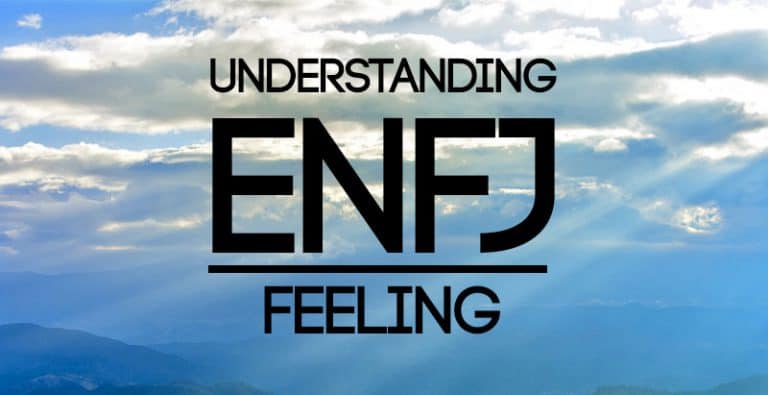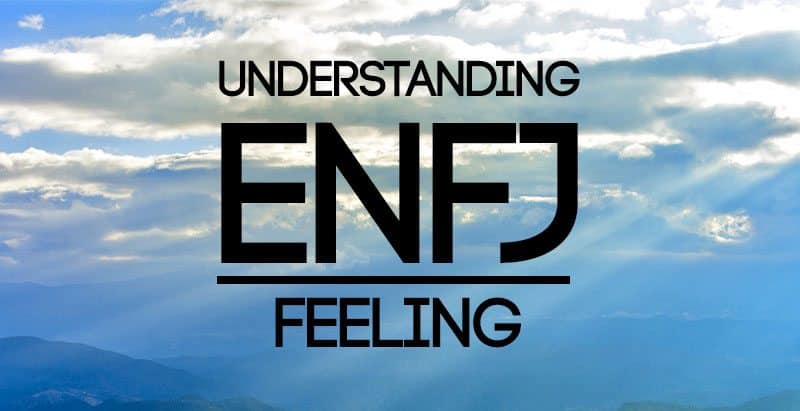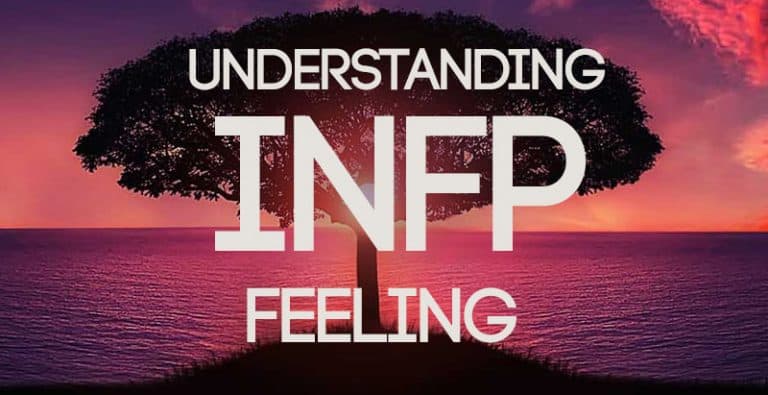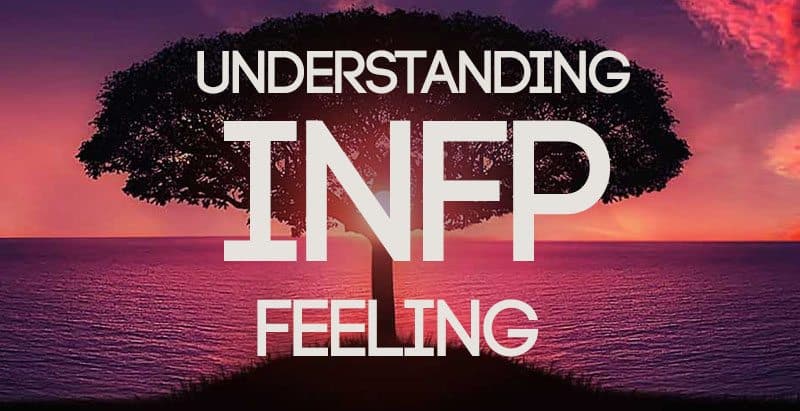The Middle-Aged Versions of Every Myers-Briggs® Personality Type
Do you ever wonder how personality type evolves and changes over time? A lot of type content focuses on the younger generation (with or without explicitly saying so). But over and over again I hear from readers in their 40s or older who are wondering how they might look different based on their age and growing maturity. So today we’re going to take a fairly brief but informative look at how many types show up in mid-life.
Not sure what your personality type is? Take our new personality questionnaire here. Or you can take the official MBTI® here.

Estimated reading time: 18 minutes
Read This First:
I don’t have time in this one article to discuss how every single type will show up based on all possible variables of their life experience. Some INFJs, for example, will be nurtured and encouraged in their skills, and thus they will be healthy and demonstrate a variety of strengths in mid-life. Others are not so, so their mid-life type development will be different and more lopsided. Today I’m going to discuss the average versions of each personality type in mid-life. Unhealthy versions aren’t going to be addressed here.
The Middle-Aged Versions of Every Personality Type
The ENFP
When ENFPs hit mid-life, they start to be more comfortable with who they are. They typically feel calmer, less scattered, and better able to organize their goals and plans. In mid-life verbal abilities, math abilities, and abstract reasoning skills tend to improve across the board for all personality types. For ENFPs specifically, the tertiary function, Extraverted Thinking, becomes more pronounced and enjoyable. As a result, they are typically better at bringing order to their environment, and can express their thoughts and judgments with more directness and clarity. They may appear to others as more tough-minded, analytical, and confident than in their earlier years.
Extraverted Intuition is still the most vital source of energy for the ENFP, even in mid-life. They still enjoy dreaming, hypothesizing, and generating possibilities for their futures. However, they are better able to pin down their ideas and execute on them without getting distracted by another glittering possibility. Healthy ENFPs are also deeply in touch with their individual values and passions. Rather than hurry from one exciting idea to another, they slow down and assess what really matters to them in their hearts.
Potential Struggles of ENFPs in Mid-Life:
- Growing work and family demands often limit the ENFPs ability to brainstorm and wander through ideas and possibilities. They may feel stifled, trapped, or limited regularly.
- If life becomes too busy and over-scheduled, ENFPs may enter a Ne-Te mental loop, which can make them more critical, overwhelmed, and out of touch with their soulful inner feeling side.
Read This Next: The Best and Worst Parts About Being an ENFP Teenager
The ENTP
Like ENFPs, ENTPs tend to feel more focused, mentally clear, and directional when they hit mid-life. They are typically able to stay on task with one thing at a time more easily. At the same time, they are often better at emotionally reading people and their interpersonal skills usually advance. Some ENTPs use this to forge stronger connections while others use this to manipulate or “sell” people on ideas or opportunities they care about.
Intuition is still the most energizing force in the ENTPs life. Generating ideas, possibilities, and theories will always give them a burst of energy and excitement. But they are typically better able to channel their ideas into productive action rather than get stuck as an armchair idea-generator who jumps from one possibility to the next.
Potential Struggles of ENTPs in Mid-Life:
- Growing work and family demands often limit the ENTPs ability to brainstorm and wander through ideas and possibilities. They may feel stifled, trapped, or limited regularly.
- If life becomes too busy and over-scheduled, ENTPs may enter a Ne-Fe mental loop, which can make them more scattered and focused on other people’s reactions or approval. During these phases they may lose touch with the internal logical principles that are powerful and reliable guides to them.
The INFP
In mid-life, INFPs have improved verbal ability, numerical ability, reasoning and verbal memory. This isn’t specific to INFPs as it occurs to all individuals regardless of type, but it is something that’s good to be aware of nonetheless. Along with these intellectual advances, INFPs also become more in touch with the grounded, routine-centered side of their personality type. They may be fonder of a daily routine or have specific rituals and habits that they protect against intrusion. Their ideas and dreams become more balanced with real-life facts and they rely more on their past experiences to guide them than they did in their young adult phase of life.
Feeling is still the most energizing and driving force in the INFP‘s life. Weighing values, considering what matters, and getting in touch with their personal ethics will always be prioritized. However, they often balance this side of themselves with an interest in alternate ideas, possibilities, and input from people they trust.
Potential Struggles of INFPs in Mid-Life:
- Growing work and family demands often limit the INFPs ability to get alone and recharge adequately. Many INFPs in mid-life are exhausted, stifled, and feeling limited mentally.
- If life becomes too busy and over-scheduled, INFPs may experience grip stress. This can make them more critical, cynical, and brusque than usual.
Read This Next: Understanding INFP Rage
The INTP
In mid-life, INTPs have a clearer focus and are better able to articulate their reasoning and inner logical principles. On top of that, they are typically more routine-oriented, stable, and down-to-earth. Rather than being armchair experts on a subject, they are more likely to look for experiences and facts to back up and flesh out their theories. Mid-life tends to give them a fondness for repeatable and comforting habits and a greater sense of their own body’s needs. They may, for example, place a higher priority on getting 8 hours of sleep a night or eating a more balanced diet.
Thinking is still the driving force of the INTP, and for good reason. These individuals do well to organize their mind with ideas and theories that bear logical weight. But rather than get tunnel vision here they are better adept at exploring those ideas in the real world and being more flexible and open to new information.
Potential Struggles of INTPs in Mid-Life:
- Growing work and family demands tend to limit the INTPs ability to get alone and refresh themselves adequately. Many INTPs in mid-life are exhausted, stifled, and feeling limited mentally.
- If life becomes too busy and over-scheduled, INTPs may experience grip stress. This can make them more emotionally reactive, insecure, and scattered.
The ENFJ
In mid-life, ENFJs become more grounded in the logical side of their personalities. While they are still dominant feeling types, their ability to explain their reasons verbally improves in most cases. On top of that, they are typically more comfortable with spontaneity and interruptions than in earlier life. While they are still intuitives, they are better at using facts and current details to back up their far-reaching visions and goals.
Feeling is still the driving force of the ENFJ, and that is how it should be. ENFJs that are healthy will have the interpersonal intelligence and persuasive idealism that they are famous for. But they also balance their charismatic, extroverted side with time alone for processing. They explore the underlying patterns and themes in their lives to make better, more accurate predictions and insights.
Potential Struggles of ENFJs in Mid-Life:
- Growing work and family demands can be satisfying, but also exhausting. ENFJs who spend too much time in an extroverted state can fall into a Fe-Se loop. When this happens, they become more reactive, reckless, and out of touch with their intuition.
- ENFJs in the workforce may feel that their skills and intelligence are underestimated due to their warm and sometimes “bubbly” personality. Feeling types are often underestimated or people assume they are incapable of handling tough projects because toughness is often associated with brusque, frank, or insensitive expressions. It’s crucial that employers and other individuals realize that Feeling is not a sign of hypersensitivity, low intelligence, or a weak-spirit.
The ENTJ
As ENTJs enter mid-life they become less hurried and more thoughtful about their actions. They are typically calmer and more socially aware of how other people are feeling. On top of that, they are more comfortable with spontaneity and change. They have more attuned senses to the details in their environment and can live in the moment with more awareness than in previous years. This helps them to enjoy leisure pursuits more fully or ground their predictions in more details and facts gathered in real life.
Thinking is still the most powerful energizer of the ENTJ type. They will thrive when they can accomplish tasks, bring order to their environment, and critique and improve systems. But they also balance this take-charge, logical side with insights into the long-term significance of what they’re doing. Rather than just staying busy and getting things done, they filter their time into pursuits that will matter most to them in the long-run.
Potential Struggles of ENTJs in Mid-Life:
- Growing family needs may be overwhelming to ENTJs. While they may be able to control their environment at work, children and family relationships are less controllable. They may struggle to deal with the intense and wavering emotions of young children or the mundane nature of some of family life.
- ENTJs who over-schedule themselves and focus too extensively on their output can get stuck in a Te-Se loop. When this happens, they are too quick to take action and shout out orders at other people. Their decisions become less careful and they are less aware of the long-term impacts of what they’re doing.
The INFJ
As INFJs enter mid-life they start to become more thoughtful of the way things work and how various ideas are composed and logically connected. This is a time in their lives where they want to be analytical, studious, and skeptical. They enjoy organizing their ideas and the facts they’ve gathered in a way that seems mentally coherent and sound. When speaking to people, they will be more aware of the inconsistencies and irrelevancies in their own or others’ logic. Logical fallacies will become especially annoying to them during this time.
Intuition is still the most energizing strength of the INFJ type. They will thrive when they can rest in silence and be open to new ideas, insights, and philosophies about life. But they also balance this mystical, introspective side with connection to the outside world. They don’t want to just know things, they want to help others with their knowledge in real, practical ways.
Potential Struggles of INFJs in Mid-Life:
- Growing work and family demands tend to limit the INFJs ability to get alone and recharge adequately. Many INFJs in mid-life are exhausted, stifled, and feeling limited mentally.
- If INFJs are too over-scheduled and overwhelmed by noise and demands, they can experience something called grip stress. When this happens, they become more reckless, impulsive, and scattered. You can find out more about this here: Understanding INFJ “Grip” Stress
The INTJ
When INTJs enter mid-life, they become more focused on making sure their actions are lined up with what will provide long-term meaning and significance. They seek meaningful, intense experiences that will awaken their emotional core. Spending time considering their values, personal ethics, and ideals becomes more important to them now than it typically did in their earlier years. In their personal interactions, they are often more tactful and sensitive to the feelings of others.
Intuition is still the main energizer of the INTJ type. They will thrive when they can get away from the noise and commotion of the outside world and be open to patterns, insights, and epiphanies about the world and their unique purpose in it. However, they will balance this mystical, philosophical side of their personality with action in the outside world. It won’t be enough to simply develop insights and predictions, they will want to organize systems and take action to bring their visions to fruition.
Potential Struggles of INTJs in Mid-Life:
- Career and family pressures tend to mount during mid-life. INTJs may feel pushed and pulled between task after task without time for quiet and reflection. As a result, they may feel stifled, overwhelmed, and irritable.
- If INTJs are too over-scheduled and overwhelmed by noise and demands, they can experience something called grip stress. When this happens, they become more reckless, impulsive, and scattered.
The ESFP
When ESFPs enter mid-life, their decisions become more grounded in logic and long-term practicality. Mentally they tend to experience more clarity and focus and can explain their reasoning to others with more adeptness. They will appear more goal-oriented and productive than in earlier years, and will be less overwhelmed when they have to critique systems or procedures that aren’t working inefficiently.
ESFPs will still get the bulk of their energy and enthusiasm from the Sensing side of their personality. Getting out in nature, being spontaneous, and staying immersed in the real world around them is vital for their well-being. Being cooped up in an office will make them feel restless and empty. They do their best work when they can get up and move and explore the world around them at the same time. In mid-life they also tend to become more in touch with the soulful, introspective side of their personality. Impulsive decisions become less frequent as they make time to consider their ethics, values, and long-term interests.
Potential Struggles of ESFPs in Mid-Life:
- Growing work and family demands often limit the ESFPs ability to pursue opportunities and experiences at their impulse. They may feel stifled, trapped, or limited regularly.
- If they are too over-scheduled and busy with external demands, ESFPs can enter a Se-Te loop. When this happens, they become more reckless, impulsive, demanding, and critical.
The ESTP
When ESTPs enter mid-life, they become more aware of how their decisions and actions impact others emotionally. They use this typically for good; to be more sensitive, conscientious, and empathetic. Others use this to manipulate or charm others into getting their way or raising the overall passion of the atmosphere. They also tend to have more focus and determination to stick with projects even when they get dull.
ESTPs will still get the majority of their energy and vigor from the Sensing side of their personality. Getting out and staying active, interacting with their environment, and being able to be spontaneous will be vital for their well-being. Being cooped up in an office will tend to make them irritable and listless. They do their best work when they can mix up responsibilities with breaks for action and fun.
Potential Struggles of ESTPs in Mid-Life:
- Growing career and family pressures often limit the ESTPs ability to pursue opportunities and experiences at their impulse. They may feel stifled, trapped, or limited regularly.
- If they are too over-scheduled and busy with external demands, ESTPs can enter a Se-Fe loop. When this happens, they become more reckless, manipulative, reactive, and concerned with how others perceive them.
The ISFP
When ISFPs enter mid-life, they are especially concerned with bringing their inner vision into the world in a meaningful way. They balance their convictions and desires with a sense of how things will unfold and insight into the underlying meaning behind all things. Others will start to notice a more mystical, philosophical side of the ISFP coming to light. Getting regular time for meditation, silence, and disconnection from social media and devices is especially healthy for them during this time.
ISFPs will get the majority of their energy and fulfillment from the Feeling side of their personality. Living according to their convictions and spending time creatively expressing their feelings and values is crucial to them. Many ISFPs enjoy artistic pursuits like music, art, or performance as an outlet for their deep inner world. Others enjoy volunteering for a cause that is near and dear to their hearts.
Potential Struggles of ISFPs in Mid-Life:
- Job and family responsibilities tend to mount during mid-life. ISFPs may feel dragged down by task-lists and demands without time for quiet and reflection. As a result, they may feel stifled, overwhelmed, and irritable.
- If ISFP’s schedules are too full or they aren’t given enough alone time, they can experience something called grip stress. When this happens, they become more critical, cynical, and stuck in directionless busywork.
The ISTP
In mid-life, ISTPs become more insightful about the deeper meaning of things. An interest in theories and unexplained phenomena tends to tickle their fancy, and they may find themselves hypothesizing about situations they predict will come to pass in the future. During this time they become more forward-thinking and philosophical, trying to find ways to make decisions that they will feel good about in the long-run.
ISTPs regardless of their age still will get the bulk of their energy from the Thinking side of their personality. Spending time in solitary analysis recharges them and they get an inordinate amount of satisfaction from categorizing and organizing data in their mind. This can make them quick to point out others’ logical inconsistencies or flawed reasoning.
Potential Struggles of ISTPs in Mid-Life:
- Job and family pressures tend to mount during mid-life. ISTPs may feel dragged down by task-lists and demands without time for quiet and energy replenishment. As a result, they may feel overwhelmed, over-stimulated, and trapped.
- If ISTP’s schedules are too crowded or they aren’t given enough time alone, they can experience something called grip stress. When this happens, they become more emotionally reactive, scattered, and prone to outbursts.
The ESFJ
In mid-life, ESFJs start to become more aware of patterns and relationships across contexts. Rather than sticking with what they know, they become more open to change and novel ways of thinking. They will find a new sense of joy when brainstorming, imagining multiple possibilities, or fantasizing about the future. This intuitive, imaginative side of their personality can make them appear more whimsical and open-minded than they appeared in earlier life.
Regardless of age, ESFJs will always be the most energized by the Feeling side of their personality type. They enjoy connecting with people, sharing and expressing their values, and organizing their world in a way that will improve morale. They are often skilled hosts who intuitively know what people need to feel comfortable. However, it’s crucial that ESFJs balance this with quiet time for reflection and rest. Many ESFJs over-schedule themselves and become out of touch with the more grounded, cautious Sensing side of their personality.
Potential Struggles for ESFJs in Mid-Life:
- ESFJs feel a huge amount of responsibility for the people in their environment. Between employers, co-workers, and children, they may overburden themselves with the needs and desires of others. This can result in overwhelm, anxiety, and imbalance.
- If ESFJs get too wrapped up in external demands and busyness, they can get caught up in something called a Fe-Ne loop. When this happens, they become more scattered, people-pleasing, and out of touch with reality and their own physical needs.
The ESTJ
In mid-life, ESTJs become more in touch with the intuitive side of their personality. They start to wonder about ideas and rules they used to take for granted, and they start to see things from more than one angle. Brainstorming brings them a newfound sense of joy and they often appear more open-minded and imaginative than usual. They also typically appear more calm and even-tempered than they did in earlier years.
No matter how old ESTJs are, they will still get the most energy and satisfaction from the Thinking side of their personality. They enjoy getting things done, marking off their checklists, and making logical decisions. Having an efficiently organized environment is crucial to their well-being. However, rather than obsessing over tasks and productivity, in mid-life they become more grounded in the quiet, reflective, and nostalgic side of their personality.
Potential Struggles for ESTJs in Mid-Life:
- ESTJs take a great deal of responsibility for their environment. They can struggle to make time to relax and enjoy the moment. This is especially true when the responsibilities of work and family mount during mid-life.
- If ESTJs get too wrapped up in external demands and busyness, they can get caught up in something called a Te-Ne loop. When this happens, they become more scattered, critical, out of focus, and obsessed with meaningless busywork.
The ISFJ
In mid-life, ISFJs become more in touch with the skeptical, logical side of their personality. They get a newfound sense of satisfaction from categorizing data, questioning things, and finding out what they really believe is true and accurate in life. They may appear more analytical and studious than usual and it’s not unusual to see them hoarding books about their various interests and obsessing over data to see how it all connects and fits together.
Regardless of age, ISFJs will always get the most energy and satisfaction from the Sensing side of their personality. Having a consistent, stable, tranquil life gives their soul replenishment and contentment. They will enjoy simple hobbies and routines that get them in touch with their bodies or their past. On top of that, they will enjoy perfecting the details in their lives so that they (and the people around them) are comfortable and happy.
Potential Struggles for ISFJs in Mid-Life:
- Work and family demands tend to mount during mid-life. ISFJs may feel dragged down by task-lists, deadlines, and the needs of their families or employers. Without time for quiet and energy replenishment they may feel overwhelmed, over-stimulated, and trapped.
- If ISFJ’s schedules are too full or they aren’t given enough time alone, they can experience something called grip stress. When this happens, they become more dramatic, worried, and plagued by worst-case scenario possibilities they imagine coming to fruition.
The ISTJ
In mid-life, ISTJs become more in touch with the introspective Feeling side of their personality. They start to consider their values, ethics, and what they truly believe outside of societal pressures. Rather than adopt certain beliefs because it’s what everyone else is doing, they look to their hearts to discern what’s right for them as individuals. While they may not verbally express their values, others might find them becoming more sensitive to others, more individualistic, or more drawn to a particular cause or movement.
No matter what their age, ISTJs will always get the most energy from the Sensing side of their personality. Having a consistent, dependable routine helps them to feel contented and calm. They will enjoy their typical hobbies and amassing details and facts about their interests. Staying in touch with their bodies and their routines is important for their well-being.
Potential Struggles for ISTJs in Mid-Life:
- Career and family demands tend to mount during mid-life. ISTJs may feel trapped by task-lists, deadlines, and the needs of their families or employers. Without time for quiet and energy replenishment they may feel overwhelmed, over-stimulated, and distracted.
- If ISTJ’s schedules are too full or they aren’t given enough time alone, they can experience something called grip stress. When this happens, they become more panicky, worried, and plagued by worst-case scenarios they imagine coming to fruition.
What Are Your Thoughts?
Did you enjoy this article? Do you have any insights or stories from your own life? Let us (and other readers) know in the comments!
Find out more about your personality type in our eBooks, Discovering You: Unlocking the Power of Personality Type, The INFJ – Understanding the Mystic, The INTJ – Understanding the Strategist, and The INFP – Understanding the Dreamer. You can also connect with me via Facebook, Instagram, or Twitter!

Subscribe to Our Newsletter

Want to discover more about personality type? Get the inside scoop with Susan Storm on all things typological, along with special subscriber freebies, and discounts on new eBooks and courses! Join our newsletter today!










Thanks for this sweet little article!! It’s nice to have something specific to us old timers and was delighted to have it arrive in my inbox. Thanks for all you do!
I had my midlife crisis at 19, so INFJ description more applies to this age. And my Ti was always rigorous, no doubt encouraged by my NT family, so I may be an outlier.
I’d say the biggest ML change is the menopause. More likely to spill Ti truths rather than Fe pander to other people’s emotions. Must be that extra testosterone?! And maybe a little people-fatigue.
Love your posts, thanks
Great post, again. thanks. Can you do and about retiring and re-evaluating your priorities and finding purpose, staying busy and living with joy, hope and happiness. thanks.
I’d love to write something like this! I’ll have to get some help from some retired MBTI practitioners I know I think for this 🙂 Stay tuned!
Your investments, insight, & contributions have been most productive in an attempt to use sound wisdom through the MB16 as we grow longer in the tooth. You make a difference.
ENTJ: how are we both overwhelmed and bored at the same time! Accurate description – I experience this everyday.
Thank you, Susan. This information is so helpful. As I’ve mentioned previously, the more information I have to understand my personality type objectively the better I am able to fit into my society. (The society I happened to be born into, like it or not.)
To me, as a non-expert, I believe the IXTJs perhaps have the most difficulty fitting themselves or integrating successfully into their society. These two types (INTJ and ISTJ) simply have no real need or desire to “fit in.” As a result (and I speak for myself) I usually keep a certian distance from people and people respond in a similar way to me. I’ve learned to be a bit more outgoing and I’ve even learned to make some small talk. Much of this improvement is due to the valuable information you provide.
Nice comments but fairly superficial understanding of midlife. It is far more complex, rich, transformative and has deep spiritual significance based in typological qualities. It represents a capacity for balance not found in younger years. It will engage one in an unanticipated journey into areas of remarkable growth.